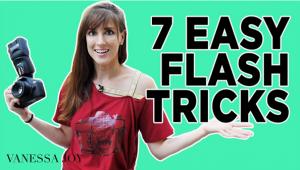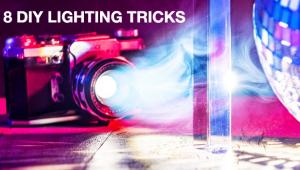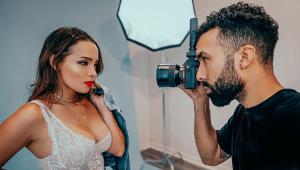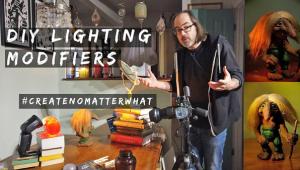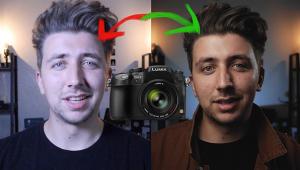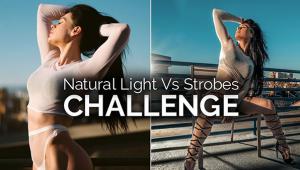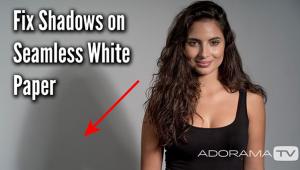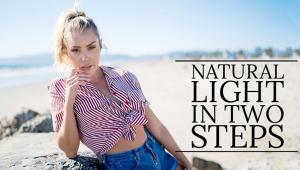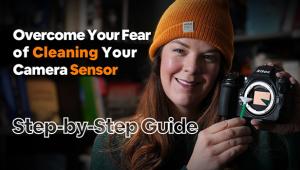Imaginative Illumination: Outdoor Night Light Painting
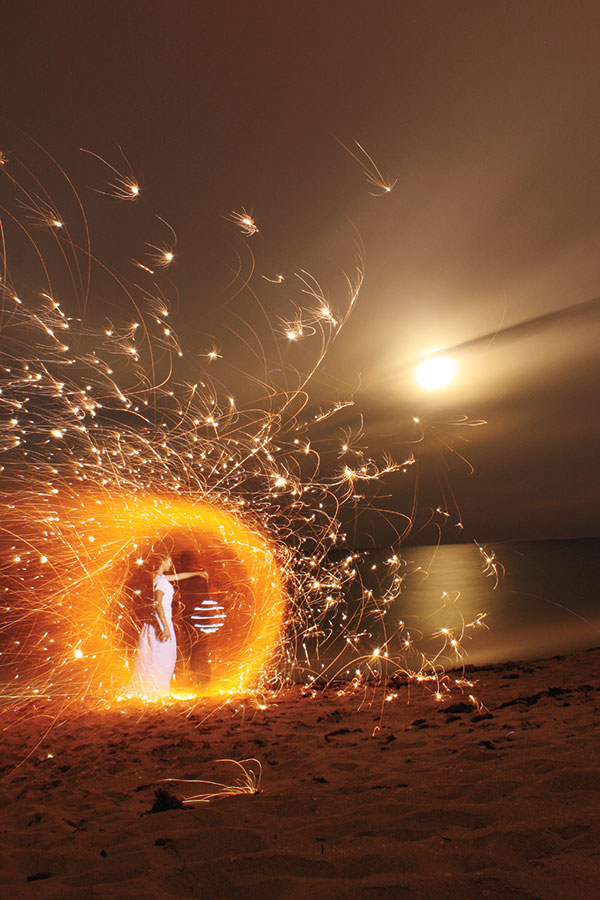
This image was created on a beach in South Florida. As the moon was rising over the ocean I ignited a chemical concoction of fireworks and spun them around. Using LED lights I created the smaller orb inside of the ball of fire and then painted the model. Note that unless otherwise indicated all images were made with a Canon EOS 50D and an EF-S 18-55mm lens mounted atop a SLIK Pro tripod. Exposure: f/13, ISO 100, 452 seconds.
All Photos © Jason D. Page
In 2004 I was out late one night for a walk on the beach, as I often did to de-stress from a long day at work. This night was particularly beautiful, with a full moon shining overhead, so I decided to bring my camera and tripod along to take some oceanscapes. I found the perfect location, set up my gear, and opened the shutter of my camera for a long exposure. While the exposure was running I accidentally bumped my camera. When I checked the image and saw that the light from the moon had left a streak going across the sky I had an epiphany. My mind raced at the possibilities of using my camera and the moonlight to draw images in the sky, and from that moment on I was a light painter.
Over the years my light painting work has progressed much like the history of light painting photography. The majority of my early images are what I consider “light drawings.” The next stage in my work came when I discovered the father of light painting, Dean Chamberlain. When I discovered Chamberlain’s light painting work it opened my eyes to the possibilities of using lights as brushes to literally paint in a scene. It also allowed me to visualize something much more significant in my personal life. It allowed me to see a way to get back into a dream that I had been trying to revisit since I was a kid.

Dressed in black, I walked through the scene selectively illuminating parts of the pathway, recreating images from my imagination. This was photographed in Jonathan Dickinson State Park, which is only a few miles from my home and one of my favorite places to be at night. Exposure: f/5.6, ISO 100, 857 seconds.
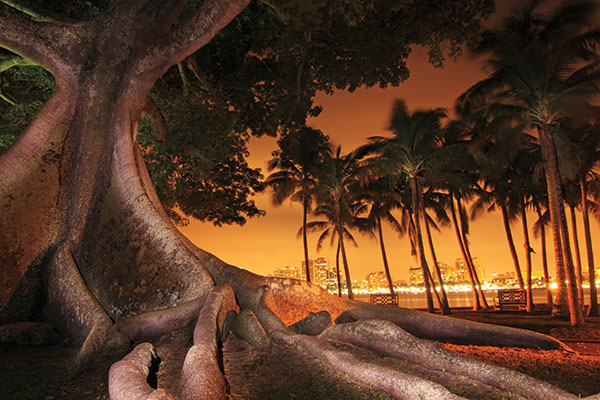
Perhaps the most photographed tree in Palm Beach, this giant banyan is located next to the famous Henry Flagler Museum. I shot this image three nights in a row because the time frame to create a light painting of this tree is very tight. Just after dark the streetlights in the area come on and flood the scene with ambient light. I shot this with a Tokina 11-16mm lens. Exposure: f/14, ISO 100, 307 seconds.
When I was young I had a dream where I went to a place in my mind more beautiful than anything I had ever experienced. I was in a forest that was bathed in the most beautiful, warm, colorful light that you could possibly imagine. Vivid reds and oranges illuminated a pathway; vibrant greens, blues, and purples coated the trees and plants. As I grew up I would always try to force myself to have this dream again, but was never able to. Chamberlain’s light painting work reminded me of this dream and showed me that light painting would allow me to recreate images that otherwise would have remained locked inside my imagination forever.
Tech Notes
Everything you see in my images is created in real time and captured in one single photographic frame. There is no Photoshop or postproduction work used to create anything you see in my images. I truly believe light painting is about getting the image right in the camera and not creating it in a computer.
To create my images I use Canon cameras, Coast flashlights, and a plethora of custom-made light tools. I use a Canon TC-80N3 intervalometer to make my exposures. Using an intervalometer allows me to push a button and lock the shutter open while in Bulb mode. Some of my favorite light modifiers are plastic bottles and Rosco gels. The focus of my light painting work is about using my camera as an instrument for recording light rather than a tool for documenting a moment. One trick that I use is to shoot with the in camera noise reduction off until I get a shot worked out. Then I turn it back on because the in camera processing can take two to three times as long as the exposure on really long exposures. I print my light paintings on Kodak Endura Metallic Paper and front mount to acrylic glass, or I print on metal. Refer to the captions for tech information on the shots themselves.

During the day I had hiked by this lake and saw thousands of dragonflies flying about. I wanted to recreate a similar scene at night with my light painting work. After quite a bit of trial and error I was finally able to create the right combination to capture this scene. Exposure: f/10, ISO 100, 87 seconds.

This image was created on one of the mountain bike trails in Jonathan Dickinson State Park. The fallen tree had been knocked down by a hurricane a year before. Each of the images in my “Light Trails” series is a representation of my personal journey with light painting; there is always a curve at the end of the path leading into the unknown. Exposure: f/8, ISO 100, 149 seconds.
The Process
I love nature and anything outdoors so naturally my favorite subjects are landscapes. I visit the state parks in Florida as often as I can. My normal routine is to stay at a park for a few days and hike during the daylight hours to find locations and get some ideas, then sketch things out in a notebook. When the sun gets low in the sky I head back to the location I have found with all my gear and get set up.
As night falls and I am looking down a dark wooded pathway or over an empty stretch of beach my imagination runs wild with the infinite dreamscapes light painting allows me to create. Most of the time I shoot alone. When I can convince someone to come along it’s usually my beautiful wife who models for me. I really enjoy incorporating people into my images.
For the average person there is nothing very exciting about my light painting process (unless there are some wild animals chasing me through the woods). Besides the critters there are other elements to deal with that can make it rather difficult: weather, bugs, and the occasional weirdo are just a few. I will often shoot for hours or several nights to try to get one single image that I am happy with. People often ask me if I get scared working out in the woods alone at night. Yes, it does happen from time to time, but I find that a dark, desolate location, with all my senses heightened, is when I feel the most creative.

Shot in Palm Beach on the “Lake Trail,” this image took several nights of painting to capture. I went to this same location many times, shooting this scene over and over to get just the right combination of colors. As the shutter stayed open I painted the scene with five different handheld lights and colored gels. Exposure: f/14, ISO 100, 242 seconds.
For more images and information, please visit Jason D. Page’s website at www.jasondpage.com.
- Log in or register to post comments

